The combination of the brilliant but tiring trip to Singapore, the jet lag and the humid heat meant that I was good for nothing for at least two days. I gave in to lethargy and sat in the cabin under the fans, mostly sleeping, reading, writing and listening to the radio. Not a bad way to recover ;). On Saturday I roused myself enough to take a bag of washing to the laundry and to have a look at the marina’s library. It’s basically a book swap facility from what I could tell, the difference being that the books are organised and they’re in a room (which also has admiralty charts and a table and chairs) instead of randomly piled on shelves in the bar or clubhouse. There was a wonderful old book in there on the development of literature but I couldn’t bring myself to take it without a book to swap. Unfortunately I never got the chance to take one up there again, so missed out on that delight. I wonder if it will still be there when/if we return.
We went for dinner that evening to one of the food outlets overlooking the marina. We thought it was an Indian fast food type of place (always good for veggies). Before we even got to the counter, a lady descended on us as if they might be just about to close or something. Anyway since she was there, waiting for us to order, we questioned her about the choices listed on the menu. Quite a lengthy interaction took place about whether certain dishes had meat or fish in them (I know I should make an effort to learn the words and phrases regarding this but believe me it isn’t as straightforward as it sounds). I wasn’t convinced by her assurances, but when the chef came out and reaffirmed that he would prepare a noodle dish with no meat or fish, I gave him the go ahead. When it arrived, there was a huge pink, glistening prawn on top of it, so back it went. After apologies and a bit of a wait, the second attempt arrived and as soon as I tasted it I knew it contained fish. I couldn’t eat it but didn’t want to send it back again. The reason I said it’s not easy to get across vegetarianism and veganism in Asia is because of their interpretation of it. Cooks and chefs in many places don’t count seafood or chicken in the meat/fish bracket, particularly if the sauces are made from stock using them (it’s just for flavour they claim (!)) so to explain preferences in Malaysian would be quite a convoluted affair. I think I’m safer (along with anyone allergic to seafood presumably) just having chips or plain rice when eating out, so when we stopped for a drink at the nearby Harbour Bar I had a nice bowl of fish-free spicy potato wedges.
We had another lazy day on Sunday (7th) due to the energy-sapping humidity. Paul checked us out at the office so that we could leave early in the morning, so we got the boat ready and planned the route to our first stop. This was to be just outside the boatyard where Sister Midnight would be hauled out for repairs to the cutlass bearing, caused by what will now forever be known as ‘the fishing line incident’ ;). We left the marina as planned at just before 7 am, with me steering us out. It was cool and cloudy – even a bit chilly – as we left the harbour and entered the open sea. By the time we approached the Second Link Bridge that links Singapore and Malaysia, it had warmed up and was fully light. We could see the traffic crawling along the road above us in the morning rush hour.


Paul had already been under this bridge when he journeyed to Puteri in April so he knew it was possible. As with the one in Penang, however, it looked wholly impossible to me. Even when almost directly underneath, it seemed that the mast would hit the top. Apparently the best thing to do if the mast is set to break is to get as low as possible. It was fascinating to watch, and there really wasn’t a lot of spare room between the top of the mast and the underside of the road.




The bridge cleared, it was time to watch out for other potential obstacles. This list grew as we motored into the busy shipping lane just after 9 am. Paul brought his laptop up to the cockpit to study the AIS screen that displayed the location and direction of crafts in the vicinity and I took over the steering. As well as looking out for fishing buoys and fishing boats, other things to watch for and avoid were:
- Fish sticks
- Fish farms
- Marker buoys
- Floating pontoons
- Ferries (car and passenger)
- Dredgers
- Oil rigs
- Tugs
- Cargo/container ships
- Police and coastguard boats
- Cruise ships
- Large pieces of floating debris


We swapped roles after a while so that I could get the hang of how the AIS reports worked. It’s great once that ‘light bulb moment’ kicks in and understanding how it works becomes clear – it did take a bit of time, though I have to admit.



At 10 am we were approached by a Singaporean police boat. It drew alongside us and we slowed down so that Paul could help them with their enquiries ;). It turned out they weren’t too keen on us cutting the corner that took us into their patrol area, and what’s more we didn’t have our AIS transmitter on. They were very nice, actually. They gave us advice, confirmed our AIS was now doing its job and even escorted us for a short time until they were satisfied we were heading in the right direction.
By lunchtime we had the Singapore skyline on our left and Indonesian islands on our right, while all around us we could still see huge container ships and ferries. A wide assortment of debris floated past us amid all this. Along with the usual organic clusters of reeds and leaves, tree branches and coconuts, I spotted several shoes & sandals; a crash helmet; carrier bags full of rubbish; large polystyrene boxes; rope and various sports’ balls. We’re both very wary of anything getting tangled in the propeller again but it’s also a sad sight to see bags of trash, food containers and hundreds of plastic bottles littering the sea. It was a lovely day to be out on the water, though: sunny but with a cooling breeze and it felt good to be on the move again.
Before anchoring near the yard, Paul wanted to get fuel from a nearby dock but it proved quite difficult to find and then when we did, there was no place to tie to. Time was getting on and we wanted to anchor before dark so we left and headed for the boatyard. It was a beautiful evening. At 6 o’clock, in watery sunlight, we saw eagles soaring overhead, becoming completely still before dropping into the water to bag the fish they’d spied. We were both tired by the time we got to the outside of Dalac Marine Boatyard and the sun was about to set, but we managed to anchor in between two fish farms in 7.5 metres of water.

We were able to enjoy a lie-in on Tuesday morning because we couldn’t enter the yard until 10 30 when the tide would be high enough. It was a bit hairy motoring through the shallow river entrance. I had to shout out the depth readings as they changed and at one point it was down to 1.8 metres! I thought we were all set to go aground but the boat skirted along the soft mud and we made it to the wall where marine staff were waiting to take our lines. We stood and watched them lift the boat out and then I had a look around the yard that would be our home for the next couple of days. It wasn’t much to look at, but then I wasn’t expecting it to be. It’s a hot, dusty yard where major repairs are carried out on vessels of all shapes and sizes. Still, it had toilets and we didn’t need to buy anything so it wasn’t a lot different from being berthed in a marina – we would just be up high, supported by chocks (providing an irresistible temptation to yell ‘chocks away’ when it was time to go).

The guys provided a set of steps so that we could climb up. It was a bit vertigo inducing to start with but I got used to it. Standing up on the bow just before sunset I looked around me and it struck me that the yard had a kind of beauty. The combination of evening sounds (crows cawing mainly), the fading light, the sight of the feral cats going about their business near the lake, and the marine guys chatting, laughing and listening to music, all combined to create a scene that appealed to me. The cats who roam around the yard seem healthy and the workers appear to be fond of them. One cat was brave enough to climb the steps to our boat but could not be persuaded to come on board. Paul managed to get us some internet so we were able to listen to the radio and catch up on the news…and social media of course ;).
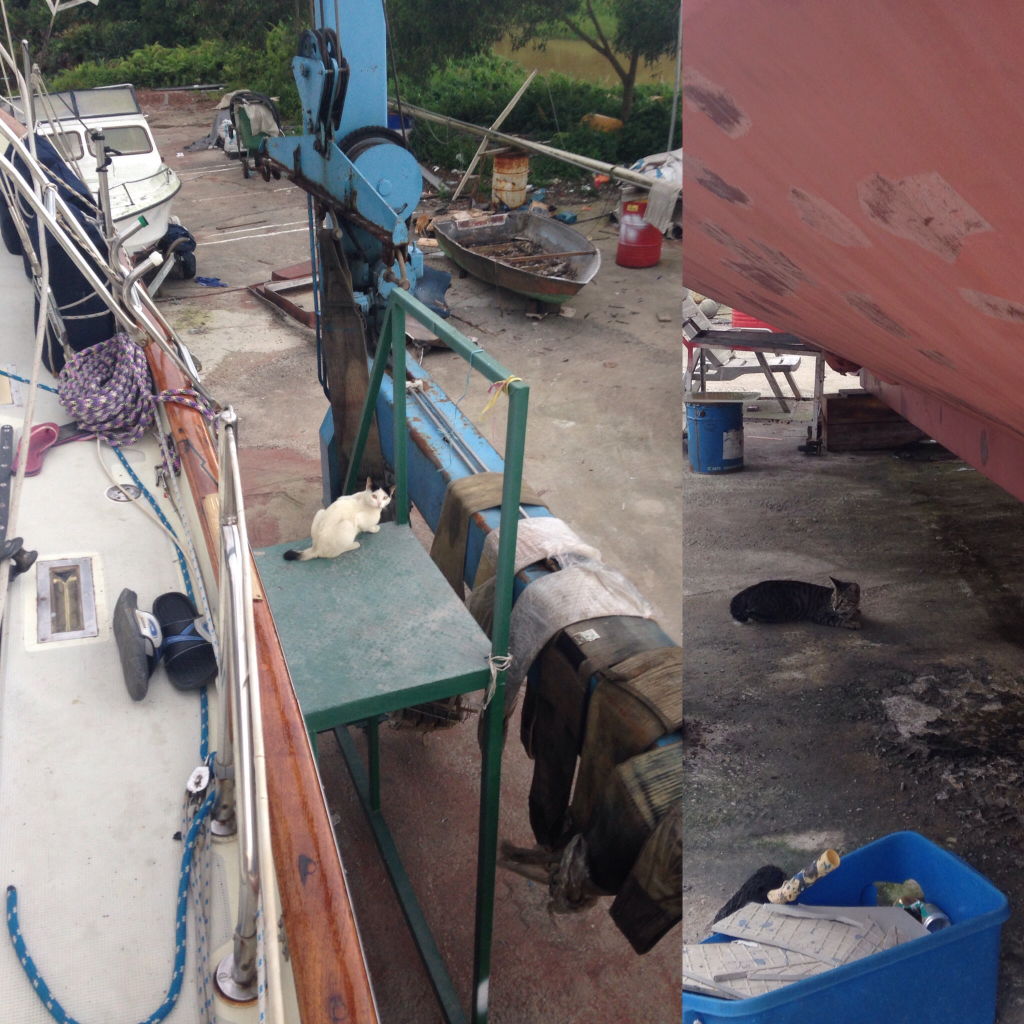


Kathy

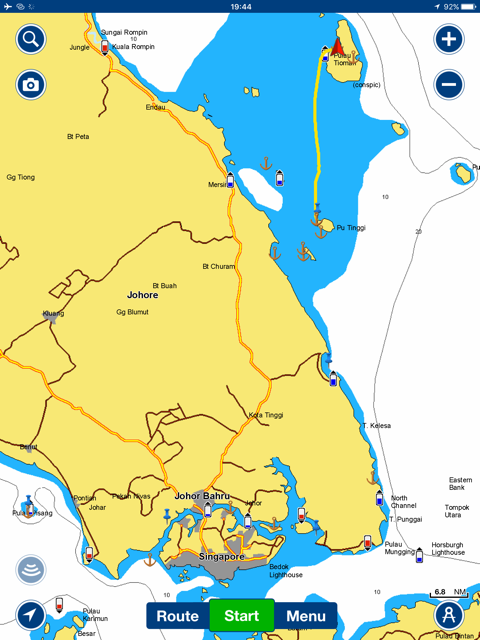
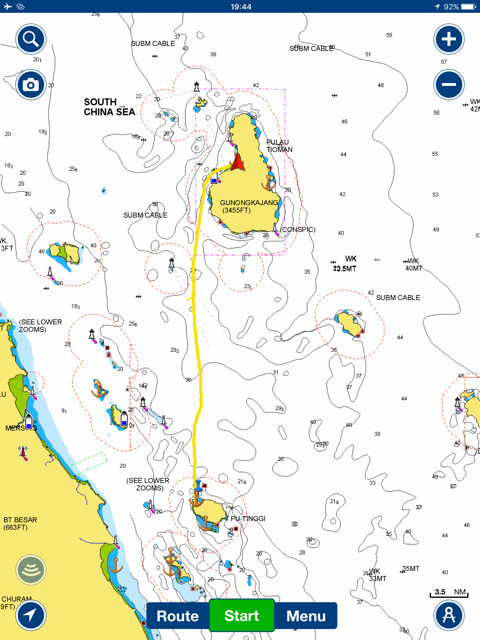
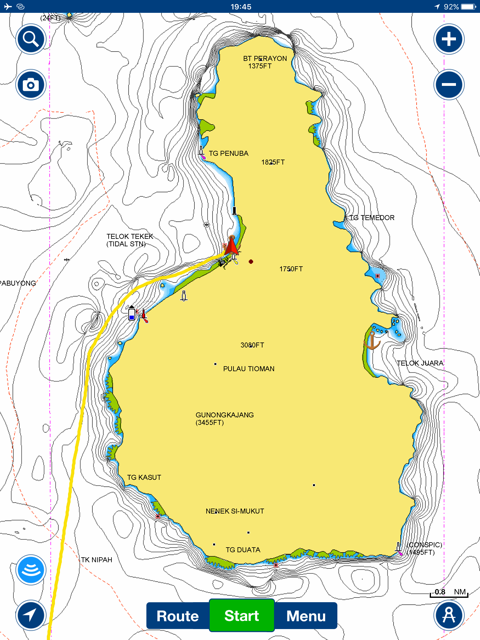
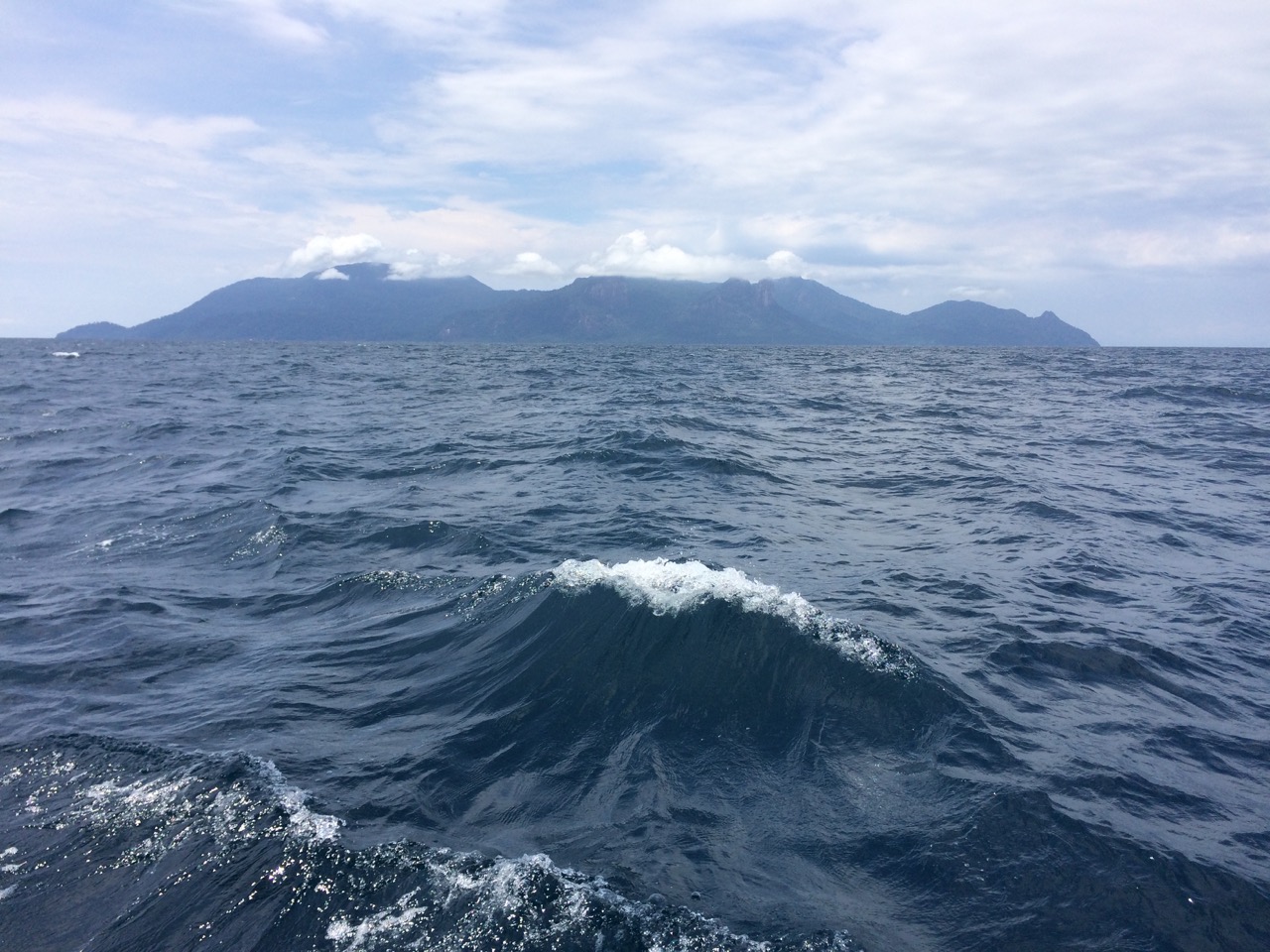
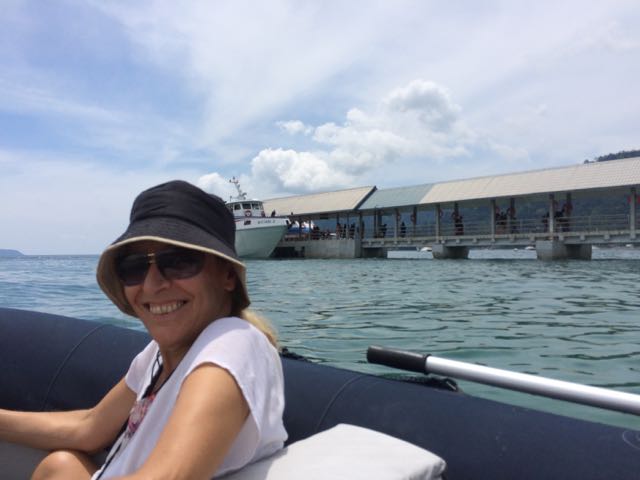
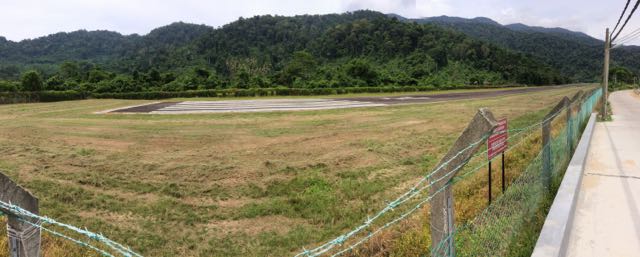
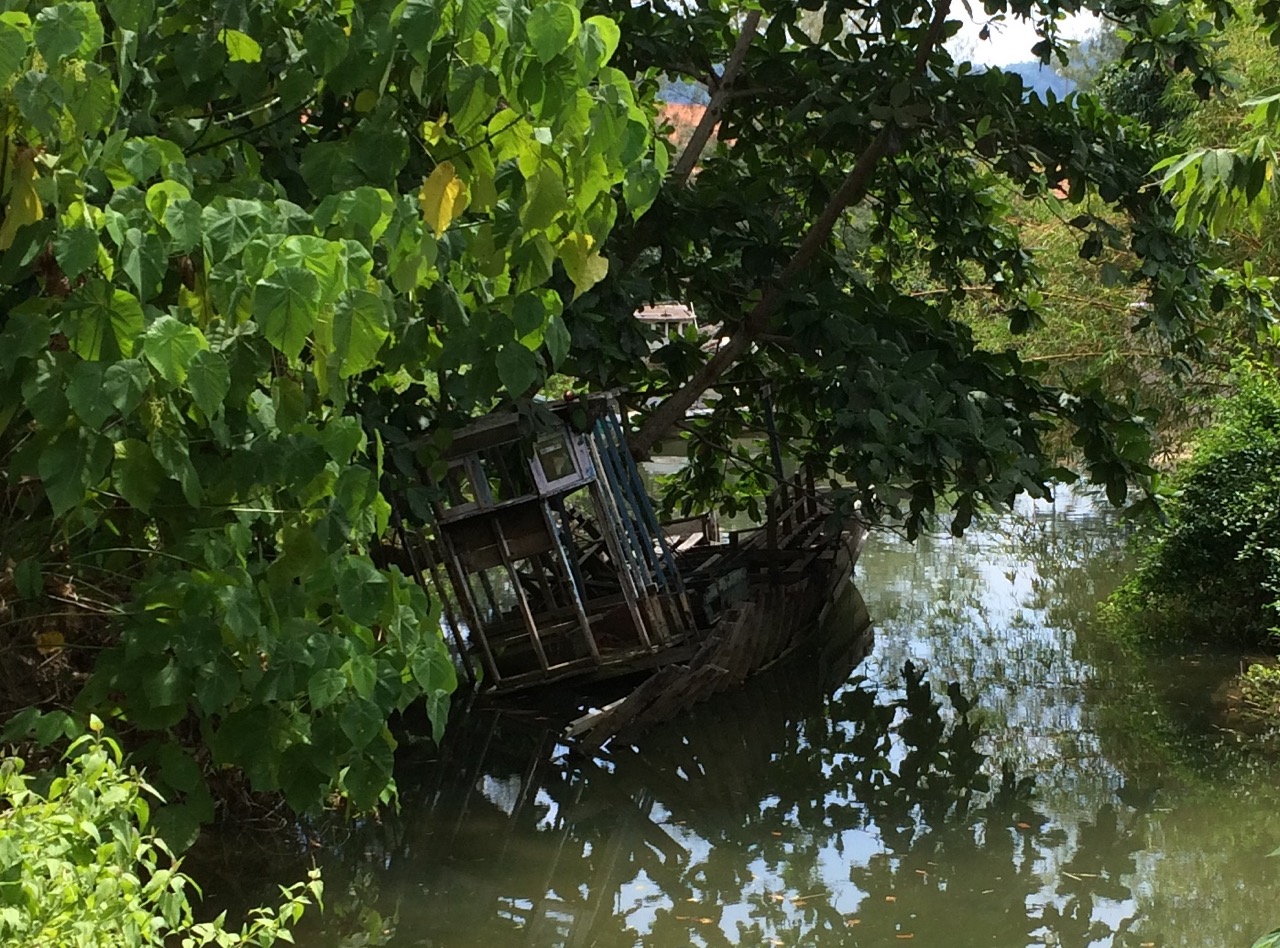
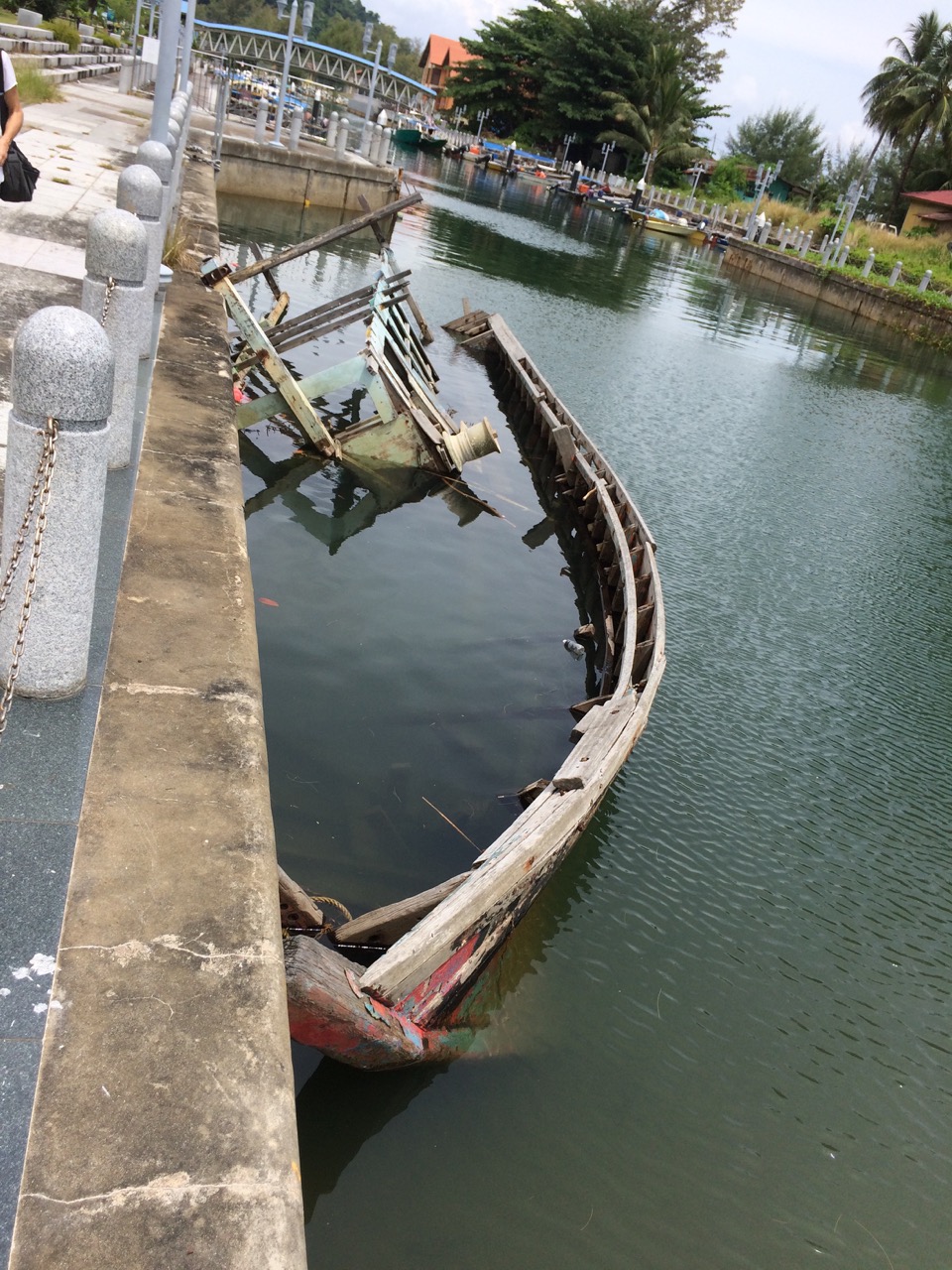 Back on the boat and another squall came through, when I went up to have a look, there was another boat about 20ft in front of me, close enough to chat to the skipper, he had just moved because the boat by him was dragging its anchor, and he had miscalculated where my anchor was and had laid his over mine, he moved even closer, then decided to head off and try again. All the time I was trying to work out if we were dragging our anchor. I think we are in sand, and that’s not great for anchors, mud is the best. I let out another ten metres of rode, so now we had 90 metres, but when you have 90m or about 300ft, you have a swinging circle with a 600ft diameter (ish), thats a large area, and these boats point one way, and can pull on the chain in another. The upshot is I spend a lot of time wondering what is going on. Since we dragged in Ko Lipe with 100m out, I’m very wary. As I write this the wind has dropped, and we have moved from some distance out to sea, back to where we started yesterday, so I think we are holding fine.
Back on the boat and another squall came through, when I went up to have a look, there was another boat about 20ft in front of me, close enough to chat to the skipper, he had just moved because the boat by him was dragging its anchor, and he had miscalculated where my anchor was and had laid his over mine, he moved even closer, then decided to head off and try again. All the time I was trying to work out if we were dragging our anchor. I think we are in sand, and that’s not great for anchors, mud is the best. I let out another ten metres of rode, so now we had 90 metres, but when you have 90m or about 300ft, you have a swinging circle with a 600ft diameter (ish), thats a large area, and these boats point one way, and can pull on the chain in another. The upshot is I spend a lot of time wondering what is going on. Since we dragged in Ko Lipe with 100m out, I’m very wary. As I write this the wind has dropped, and we have moved from some distance out to sea, back to where we started yesterday, so I think we are holding fine.